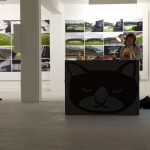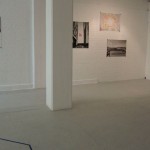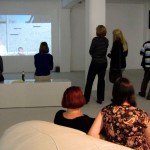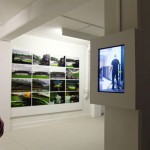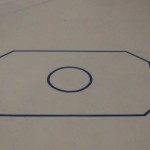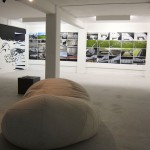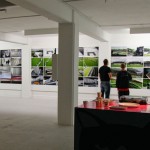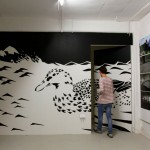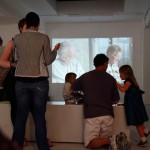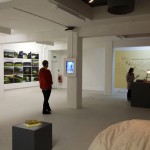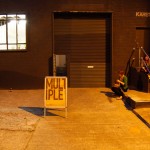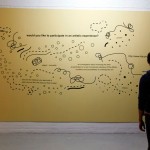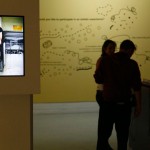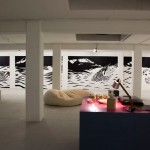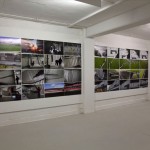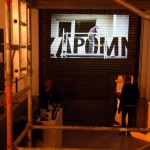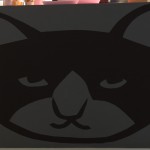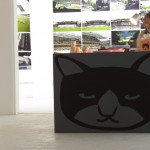Multiple Choices | Karst
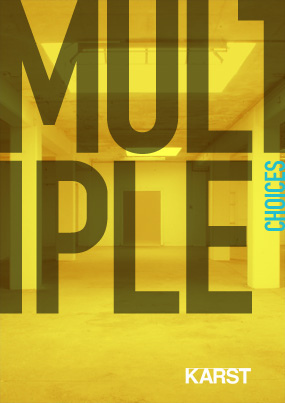
MULTIPLE CHOICES
Karst Projects
Aug 23 – Sept 23, 2012
ARTISTS
Ricardo Basbaum, Ane Hjort Guttu, Katya Sander, Miho Shimizu, Øyvind Renberg, Alex Villar
ABOUT THE EXHIBITION
Multiple Choices is a collective initiative started by three artists who live in different places from one another. Each of the members is also based away from their place of origin: Oyvind Renberg, born in Norway, is currently living in Germany; Alex Villar, born in Brazil, lives in the United States; only Miho Shimizu, who was born in Japan and had been living in Scandinavia, is now back in Japan. The experience of difference that comes with contextual displacement is therefore very present in their lives. Although the three artists met in the early 2000s and soon started to work on a few projects, they only conceived of Multiple Choices as a productive process for working together in 2008. Their first project as a group was an exhibition on that same year for Oslo Kunstforening. That project led to plans for a book that would expand on the initial group of artists. They invited Judith Schwarzbart to be their editor and commissioned texts from writers working in Europe and the Americas: Simon Sheikh, Gloria Ferreira and Eva Diaz. For the exhibition at Karst-Projects, the configuration includes the core group of artists plus Ane Hjort Guttu who is based in Norway, Katya Sander who lives between Denmark and Germany, as well as Ricardo Basbaum who lives in Brazil.
In keeping with the heterogeneous preferences of the group, which is conveyed by the name Multiple Choices, the exhibition at Karst brings together work that are both thematically and morphologically distinct. What the works have in common, and what makes sense of the exhibition as a singular collection, is the fact that these works share a focus on already constituted relational situations. A relational situation is here understood as that which permeates the social sphere; that is, relations among people but also between people and the things and spaces that surround them. These works’ probing of relationality is less about the creation of situations for the audience to play within and more about an inquiry into, and sometimes disruption of, those relations that already occur in the world at large.
The exemplar piece in the exhibition, the work that most directly addresses the question of relationality, is Ricardo Basbaum’s project “Would you like to participate in an artistic experiment?” This work instantiates new relations through the insertion of similarly shaped objects into differentiated contexts. He treats the art object as itself a kind of readymade by inserting it into everyday situations, an operation that essentially multiplies its use value while neutralizing its exchange value. Value itself, or rather surplus value, as extracted by capital from our commonwealth, is the subject of Anne Hjort Guttu’s piece. Her project evidentiates how real estate appropriates our natural relation to sunlight by turning it into signifier of privilege. Katya Sander, on the other hand, manipulates a signifier that is more properly linguistic. Her Tifo piece takes a clue from an existing soccer fan situation that she works to transform through a subtle linguistic shift, therefore placing new content into an established form. In the process, she interrupts the continuity in the relation of support between fans and their sport and open up the possibility for reflection upon a larger condition. Alex Villar’s work also seeks to shift already constituted relations, particularly class relations as these effectively segregate access to opportunity. His piece makes use of mobile scaffolding to orchestrate a series of breakings into various buildings. In these performative deviations from the norm, the actions in his video produce a gradual departure from the established order. Existing relational situations, as seen from the standpoint of the work in the exhibition, may sometimes provide the very conditions of possibility for the artwork to come into being. This is the case in Miho Shimizu & Oyvind Reberg’s work process as they usually begin by sampling a variety of cultural elements from a site, which they collage into a complex portrait of an experience. The result is not a representation of an existing relation but rather the creation of new artistic possibilities through a continuous process of recombination. That’s why their project for the exhibiton presents not one but several pieces; they demonstrate the generative character of their process.
Accompanying the exhibition is the Multiple Choices book, whose production has just been concluded and which is being launched on the same occasion. Although there are a number of recurrences between book and exhibition, the content of the former is not symmetrical with the latter. In other words, the book does not catalogue the exhibition. It shares its focus on relationality since this remains the concern of many of those present in the book but it also seeks to understand the active processes at play in the spheres that contain those practices. This is more clearly the case with the contributions of the writers. Gloria Ferreira for example utilizes the Derridean notion of Hospitality to demonstrate that there is a different logic at work in the organization of the collective artistic assemblage as well as in the relation between art practice and those intersected by the artistic gesture. Eva Diaz sought in the closing gap between artistic intervention and the social terrain of its deployment a more radical democratic sphere, an agonistic sphere as defined by Chantal Mouffe, a theorist Diaz engages in her text. Simon Sheikh’s tackles the very notion of a public sphere in a critical treatment of the work of Habermas. While building upon a concept by Cornelius Castoriadis, Sheikh posits a counter-hegemonic imagining of the social sphere.
ABOUT THE BOOK
Accompanying the exhibition is the Multiple Choices book, whose production has just been concluded and which is being launched on the same occasion. Although there are a number of recurrences between book and exhibition, the content of the former is not symmetrical with the latter. In other words, the book does not catalogue the exhibition. It shares its focus on relationality since this remains the concern of many of those present in the book but it also seeks to understand the active processes at play in the spheres that contain those practices. This is more clearly the case with the contributions of the writers. Gloria Ferreira for example utilizes the Derridean notion of Hospitality to demonstrate that there is a different logic at work in the organization of the collective artistic assemblage as well as in the relation between art practice and those intersected by the artistic gesture. Eva Diaz sought in the closing gap between artistic intervention and the social terrain of its deployment a more radical democratic sphere, an agonistic sphere as defined by Chantal Mouffe, a theorist Diaz engages in her text. Simon Sheikh’s tackles the very notion of a public sphere in a critical treatment of the work of Habermas. While building upon a concept by Cornelius Castoriadis, Sheikh posits a counter-hegemonic imagining of the social sphere.
KARST
Carl Slater, Director
Glen Johnston, Studios Manager
Donna Howard, Project Coordinator
22 George Place
Stonehouse
Plymouth, UK
www.karst-projects.org
Info@karst-projects.org
Gallery Tel: (+44) 0 1752222676
https://www.facebook.com/events/333057186787843/
NABROAD features the exhibition.
SUPPORT
Multiple Choices is supported by Arts Council England, OCA (Office of Contemporary Art Norway), Danish Arts Council, Plymouth Arts Centre, The Great Britain Sasakawa Foundation, Fritt Ord, Norwegan Arts Council.

